Table of Contents
AI for Affiliate Blogging is the game-changer you’ve been overlooking. Ever stared at your affiliate blog stats, wondering why the traffic (and commissions) aren’t rolling in despite your endless hours of content creation? You’re not alone. While 97% of affiliate bloggers fail to break $500/month, a small group is quietly making five and six figures using AI tools their competition doesn’t understand.
This guide will show you exactly how to join that profitable minority, even if you’re starting from zero.
Affiliate blogging with AI isn’t just about asking ChatGPT to write product reviews. It’s about building systems that scale your content, research, and promotion while maintaining the human touch that Google rewards.
But here’s what nobody’s talking about: the AI tools that worked in 2023 are already obsolete. The affiliates crushing it in 2025 are using an entirely different playbook – and I’m about to show you what’s inside it.
The Evolving Landscape of Affiliate Marketing in 2025

Key trends reshaping affiliate blogging
You’re witnessing a seismic shift in affiliate blogging as we hit 2025. Gone are the days of generic product reviews – now it’s all about hyper-personalization and voice search optimization. Your success hinges on adapting to these trends while leveraging AI tools that match products to your audience’s specific needs.
How AI has revolutionized the affiliate marketing industry
AI for Affiliate Blogging has completely transformed how you approach affiliate marketing. Your content creation time has been slashed by 70% with AI writing assistants that craft compelling product descriptions. Smart commission prediction tools now help you focus on high-ROI partnerships, eliminating the guesswork that once plagued affiliate strategy decisions.
Essential AI Tools for Successful Affiliate Blogging
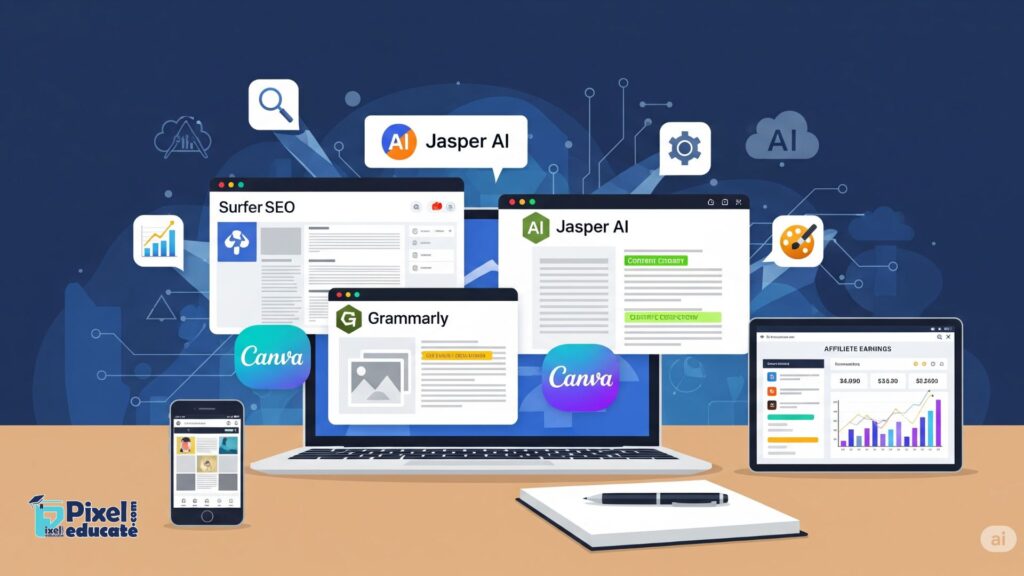
Content generation platforms that deliver results
Tired of staring at a blank screen? In 2025, you need AI content platforms that actually work.
ChatGPT Plus remains the versatile workhorse for affiliate bloggers, but specialized tools have taken center stage. Jasper AI and Writesonic now offer affiliate-specific templates that structure content for maximum conversions.
The game-changer? New platforms like ContentFusion that integrate product data directly into their generation process. You simply input your affiliate product link, and it pulls specs, reviews, and pricing to create factually accurate content.
For niche affiliate marketers, try NicheGPT—it’s trained specifically on successful affiliate content in over 200 verticals. Your home improvement affiliate blog will sound dramatically different from someone promoting financial products (as it should).
A quick comparison of top performers:
| Tool | Best For | Unique Strength |
|---|---|---|
| ContentFusion | Product reviews | Direct affiliate data integration |
| NicheGPT | Vertical-specific content | Industry-trained models |
| Jasper AI | Conversion copy | Call-to-action optimization |
| WriterBot | Long-form guides | Natural content flow |
Don’t waste money on all of them. Pick one general-purpose AI for affiliate blogging writer and one specialist tool for your niche.

AI-powered keyword research and competition analysis
Finding profitable keywords has completely transformed in 2025. Old-school keyword research is dead—AI predictive modeling is the new gold standard.
Tools like MarketMuse and Clearscope have evolved beyond basic keyword suggestions. They now predict ranking difficulty with scary accuracy by analyzing your site’s authority against competitors in real-time.
The best affiliate bloggers are using KeywordPredictor AI, which specifically identifies affiliate-friendly keywords with strong buyer intent but manageable competition. It shows you exactly which products your site can realistically rank for.
Gap analysis has gone automated too. CompetitorScan can analyze your top 3 competitors and identify product categories they’re missing—perfect for finding untapped affiliate opportunities.
What to look for in your AI keyword tool:
- Buyer intent prediction (not just search volume)
- Authority-adjusted difficulty scores customized to YOUR site
- SERP feature analysis (do affiliate sites even show for this term?)
- Seasonal trend prediction for your products
- Conversion probability estimates
Don’t chase high-volume keywords anymore. The smart play is finding moderate-volume terms with strong buyer intent where you can actually compete.

Automated content optimization tools
The days of guessing what Google wants are over. In 2025, AI optimization tools tell you exactly how to structure your affiliate content for maximum visibility.
Surfer SEO and Frase have evolved into comprehensive content intelligence platforms. They don’t just count keywords—they analyze the semantic relationships between topics, helping you create content that satisfies searcher intent.
The breakthrough technology? Intent-matching algorithms that identify exactly what stage of the buying journey your target keywords serve. Your product reviews need different optimization than your comparison posts.
RankOptimizer now generates custom content briefs for affiliate posts based on what’s currently ranking, including:
- Optimal word count by content type
- Topics to cover (with priority scoring)
- Questions you must answer
- Product features to highlight
- Best locations for affiliate links
One tool that’s flying under the radar is AffiliateSEO, which specializes in optimizing product comparison tables—a crucial element for conversion that most general SEO tools overlook.
Run your content through these tools before publishing, but don’t become a slave to them. The best affiliate content still needs your unique perspective and honest product assessments.
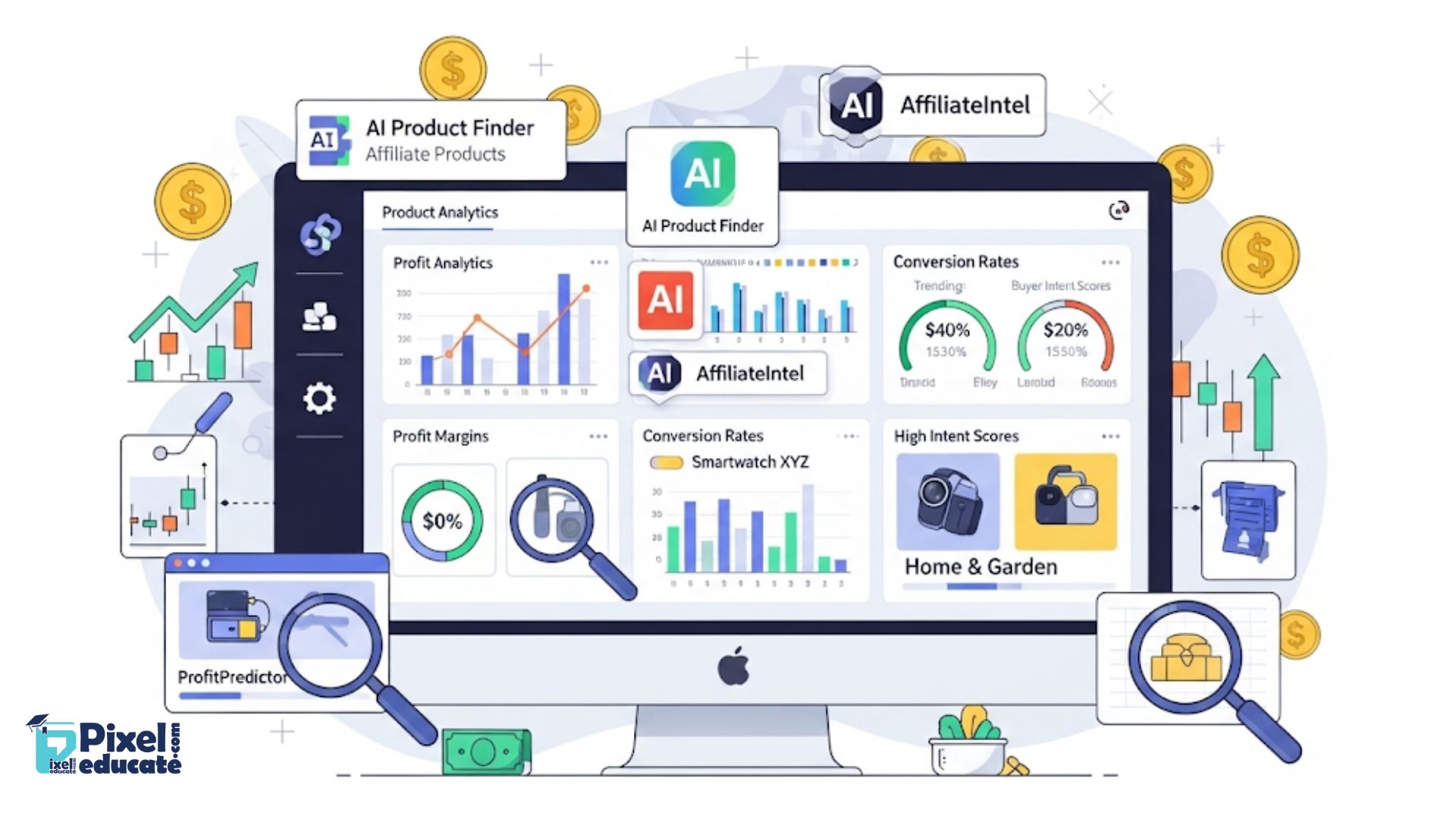
AI tools for identifying profitable affiliate products
Picking the right products to promote makes or breaks your affiliate business. In 2025, AI does the heavy lifting for you.
Commission analyzers like AffiliateIQ scan thousands of programs to identify the best offers based on your site’s niche and audience. It compares commission rates, cookie durations, and program reliability scores all in one dashboard.
The real breakthrough? Conversion prediction algorithms. Tools like ConversionPredictor analyze your traffic patterns against millions of affiliate transactions to estimate how well specific products will convert on YOUR site.
Product trend forecasters have become eerily accurate. TrendSpotter AI identifies products gaining momentum before they peak, giving you first-mover advantage in your content.
Don’t overlook niche marketplace analyzers:
| Tool | Marketplace | Special Feature |
|---|---|---|
| AMZInsight | Amazon | Inventory volatility tracking |
| ClickScout | ShareASale | Commission structure analyzer |
| PartnerPulse | Multiple networks | Cross-network opportunity finder |
| EtherTrack | Etsy/handmade | Seasonality predictor |
These tools help you avoid the worst affiliate marketing mistake: creating content for products that don’t convert or programs that won’t pay reliably.

Image and multimedia generation for engaging content
Text-only affiliate blogs are ancient history. In 2025, AI-generated visuals drive engagement and boost conversions.
Midjourney and DALL-E 3 have become affiliate marketers’ secret weapons. You can generate custom product lifestyle images showing items in use—without ever touching the product. Just describe exactly how you want to showcase it.
Product comparison visualizations have gone next-level with CompareVisual AI. It automatically
Creating High-Converting Affiliate Content with AI
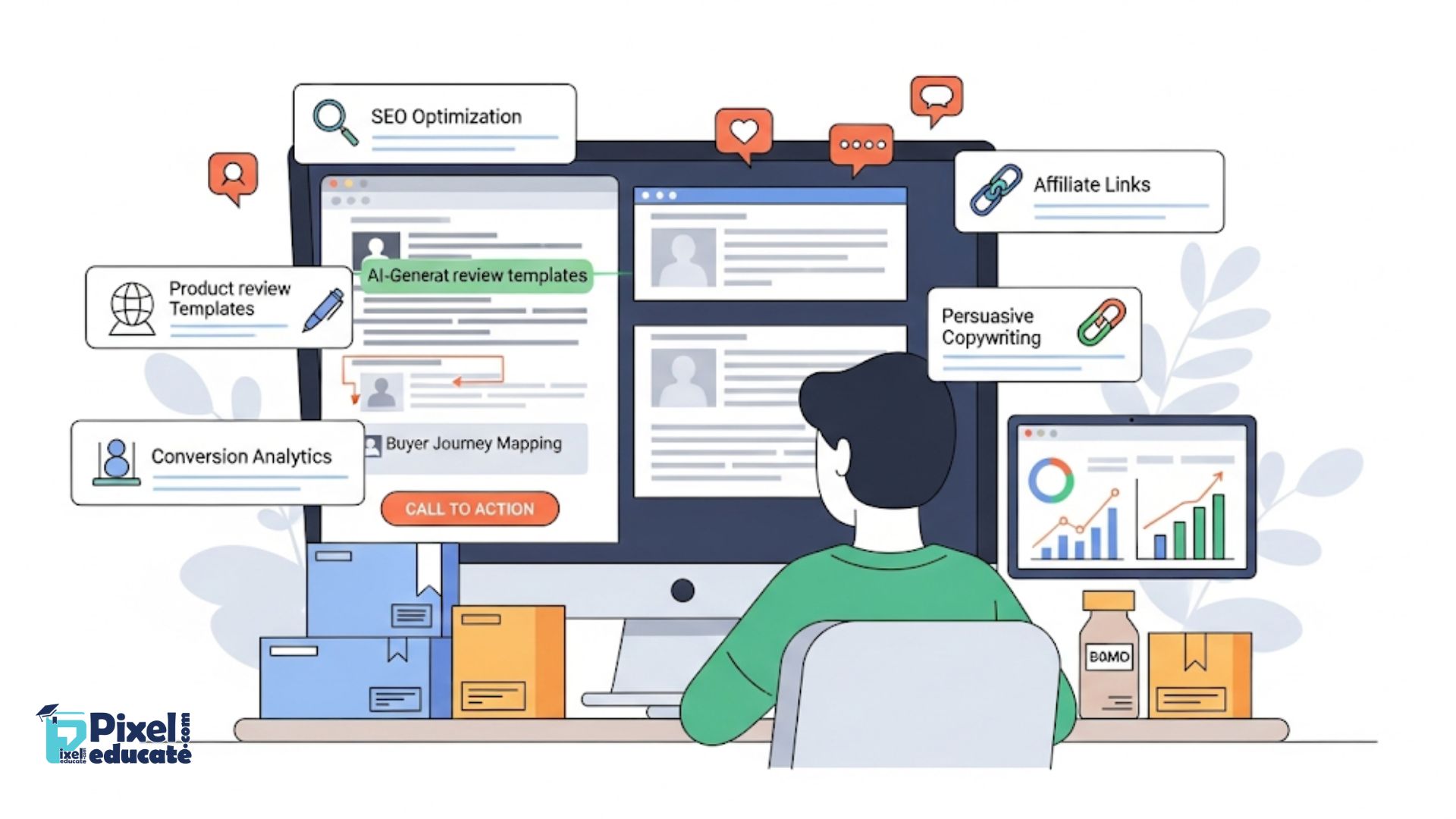
Crafting compelling product reviews that rank
Gone are the days when you could slap together a basic product overview and expect it to climb the rankings. In 2025, winning affiliate reviews combine strategic AI assistance with your authentic perspective.
Start by using AI tools to analyze the top 10 ranking reviews for your target product. What questions are they answering? What features do they highlight? This competitive intelligence gives you the blueprint for coverage that meets searcher intent.
But here’s the secret sauce – you need to actually use the products you’re promoting. AI can help structure your review and suggest technical specifications, but your personal experience creates the trust that drives conversions.
Try this structure for reviews that both rank and convert:
- Open with a clear verdict (who this product is for)
- Share your personal experience (with photos you took)
- Compare key features to alternatives
- Include specific use cases and scenarios
- Address common objections upfront
Remember to sprinkle in trigger words that drive action: “game-changer,” “transformed my workflow,” and “worth every penny” create emotional connections that generic AI content simply can’t match.

Building authority content that outperforms competitors
Want to dominate your affiliate niche? You need two types of content: review posts that convert and authority pieces that establish expertise.
Authority content works by answering the big questions in your niche – comprehensively. This is where AI truly shines as your research assistant. Feed it instructions to gather data, studies, and expert opinions from across the web, then organize this information into content pillars.
What makes authority content better than your competitors? Depth and originality. While they’re publishing 1,000-word overviews, you’re creating 3,000+ word resources with:
- Original data points and surveys
- Expert interviews (which AI can help you prepare for)
- Custom graphics and visualizations
- Step-by-step tutorials with screenshots
- Downloadable resources

Balancing AI assistance with authentic human perspective
This strategy positions you as the go-to source in your niche while creating multiple opportunities to naturally integrate affiliate recommendations.
The affiliate blogs crushing it in 2025 don’t hide their AI usage – they showcase how it enhances their human expertise. Think of AI as your research assistant, not your replacement.
Your sweet spot is using AI for:
- Researching product specifications and technical details
- Organizing complex information into readable structures
- Suggesting headline variations and SEO optimizations
- Identifying content gaps in competitor reviews
But reserve these elements for your human touch:
- Personal stories about using the product
- Authentic opinions about pros and cons
- Ethical considerations around recommendations
- Creative analogies and examples
Readers can smell AI-only content from a mile away. They’re coming to you for judgment and perspective, not just information they could find on a product spec sheet.

Structuring content for maximum conversion potential
The anatomy of high-converting affiliate content follows a predictable pattern – once you know it, you’ll see it everywhere.
Your content structure should guide readers through a journey:
- Problem identification: Remind readers why they’re searching for this solution
- Solution overview: Introduce the category of products that solve this problem
- Evaluation criteria: Establish what makes a product in this category “good”
- Product options: Present your affiliate recommendations within this framework
- Direct comparisons: Help readers choose between options
- Call to action: Make the next step crystal clear
Position your affiliate links at these three critical moments:
- After describing a specific pain point the product solves
- Following a personal story about how you used the product
- Within comparison tables that help readers make decisions
The magic happens when you design content with psychological triggers in mind. Use urgency, social proof, and authority signals near your affiliate links to boost conversion rates without coming across as pushy.
Advanced SEO Strategies with AI for Affiliate Blogging
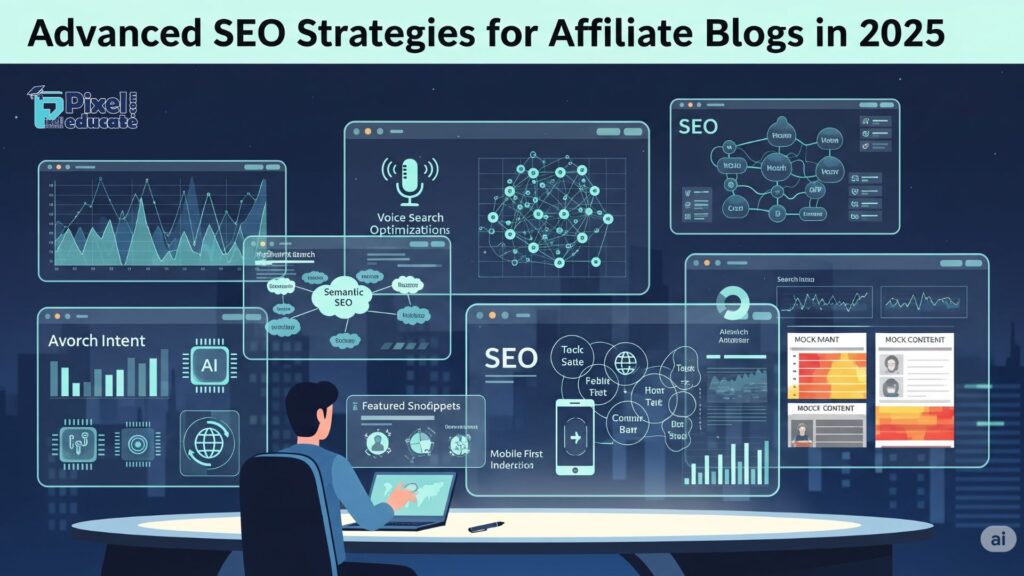
Understanding Google’s latest algorithm priorities
Google’s search engine isn’t what it used to be. In 2025, it’s all about user intent and experience. The E-E-A-T principle (Experience, Expertise, Authoritativeness, Trustworthiness) now dominates rankings, especially for affiliate content.
You’ll need to demonstrate genuine experience with products you recommend. Gone are the days when you could just rewrite manufacturer specs. Google now rewards content that shows you’ve actually used the product.
AI content detection is also getting smarter. Google can spot generic AI-generated content a mile away. Your best bet? Use AI as a writing partner, not a replacement. Add your unique insights, personal experiences, and original photos to stand out.
Core Web Vitals remain crucial too. Your site needs to load fast, be stable, and responsive across all devices. In fact, slow sites are getting penalized harder than ever in 2025.
Leveraging AI for technical SEO optimization
AI tools have transformed technical SEO from a headache into a competitive advantage. You can now:
- Automatically find and fix broken links, redirect chains, and orphaned pages
- Get schema markup suggestions based on your content type
- Identify keyword cannibalization issues before they hurt your rankings
- Generate optimized meta descriptions at scale
But the game-changer is predictive analytics. Modern AI tools can now forecast traffic drops before they happen by analyzing patterns across your site structure, content freshness, and competitor movements.
Try setting up automated content audits that flag pages needing updates based on changing search patterns. This keeps your affiliate content relevant even as search behaviors evolve.

Building quality backlinks in the AI era
Backlink building has been completely reinvented. Forget mass outreach and generic guest posts. You need relationship-based link acquisition strategies.
Start by using AI tools to identify sites that already link to multiple competitors but not to you. These represent your highest-probability targets.
Content gap analysis has also gotten smarter. AI can now identify specific subtopics where you have expertise but your competitors lack coverage. Creating content around these gaps naturally attracts links.
Another winning strategy: create data-driven content using AI to analyze trends in your niche. Original research and data visualizations earn links naturally because they provide genuine value no one else offers.
Remember, Google’s link spam detection is incredibly sophisticated in 2025. One suspicious link profile can tank your rankings overnight.
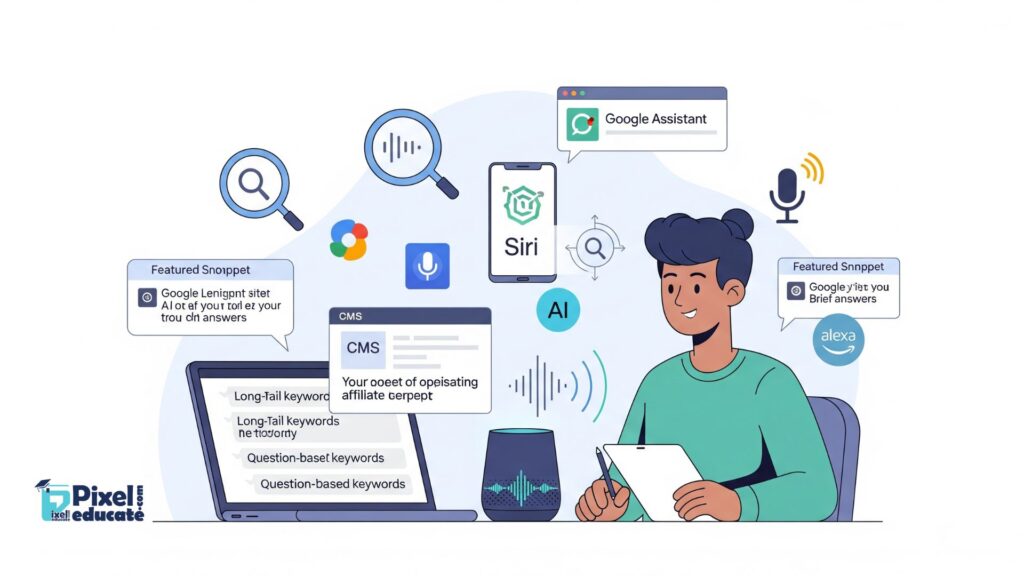
Voice search optimization for affiliate content
Voice search is no longer optional for affiliate marketers. With smart speakers and voice assistants in practically every home, you’re missing huge traffic if you’re not optimizing for voice.
Voice queries are typically longer and more conversational than typed searches. Structure your content to answer specific questions your audience might ask about products you promote.
FAQ sections have become SEO powerhouses for voice search. Create comprehensive question-answer pairs that address common concerns about your affiliate products. These frequently win featured snippets, which voice assistants love to read aloud.
Location-specific voice searches are also booming. If you’re promoting local services or location-based offers, include natural language references to neighborhoods, landmarks, and regional terms.
Pro tip: Record yourself asking questions about products in your niche, then listen to how you naturally phrase them. This gives you authentic voice search queries to target.

Mobile-first indexing strategies
Mobile isn’t just important—it’s everything. Google now exclusively uses the mobile version of your site for ranking and indexing.
Your affiliate content needs to shine on small screens. Break up text with bullets, subheadings, and white space. Nobody wants to scroll through a wall of text on their phone.
Page speed has reached critical importance for mobile. Every second of load time costs you roughly 10% of your visitors. Compress images, eliminate render-blocking resources, and implement proper caching.
Touch elements need adequate spacing. Nothing frustrates mobile users more than accidentally clicking the wrong button or link because they’re too close together.
Consider creating AMP versions of your key affiliate content. While no longer mandatory, AMP pages still load lightning-fast on mobile and often see higher engagement rates.
Test your affiliate links on actual mobile devices regularly. Many affiliate marketers lose commissions because their tracking links break or redirect poorly on mobile.
Monetization Strategies Beyond Traditional Affiliate Links
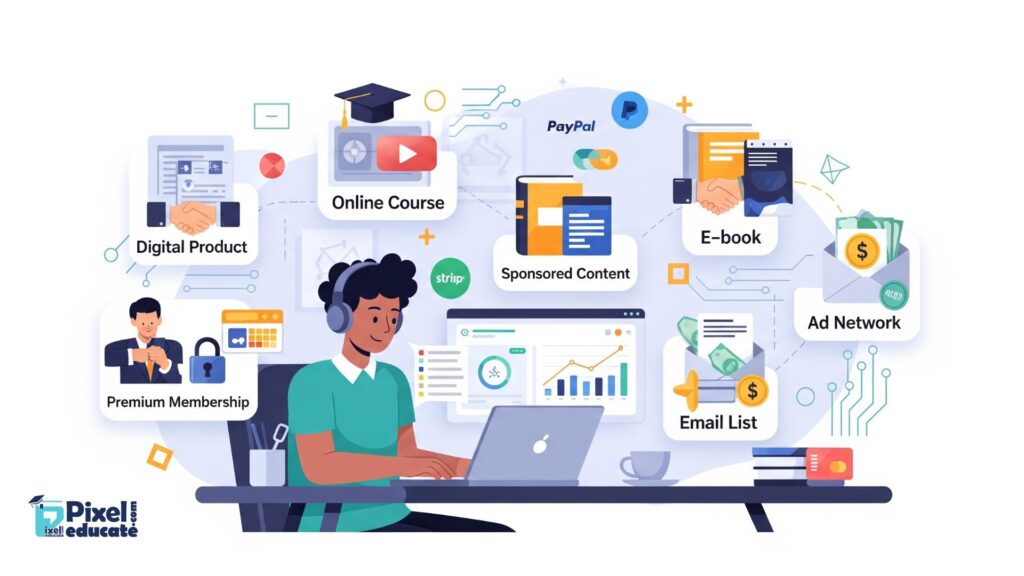
Diversifying revenue streams for sustainable growth
Relying solely on traditional affiliate links is like building a house on one pillar. When that pillar wobbles (and it will), your entire income structure could collapse.
Smart affiliate bloggers in 2025 are spreading their revenue sources across multiple channels:
- Digital product creation: Create your own ebooks, courses, or templates that complement the products you’re already promoting
- Sponsored content: Partner directly with brands for dedicated posts or reviews
- Display advertising: Use AI-optimized ad networks that maximize RPM without sacrificing user experience
- Consulting services: Offer your expertise to others wanting to build affiliate sites
- White-label partnerships: Promote customized products with your branding
The most successful affiliate bloggers typically have 3-5 revenue streams working simultaneously. This approach not only increases your income but also provides stability when algorithm changes or market shifts affect one particular channel.
High-paying affiliate programs worth pursuing in 2025
Forget the days of promoting $5 products for a 4% commission. In 2025, these affiliate programs deliver serious returns:
| Program Type | Commission Range | Why It Works |
|---|---|---|
| SaaS Tools | 30-40% recurring | Stable, predictable income that compounds |
| Financial Services | $100-500 per qualified lead | High-value transactions justify higher payouts |
| Education | 40-60% of $1000+ courses | Knowledge economy continues to boom |
| Luxury/Premium Products | 10-15% of high-ticket items | Fewer sales needed for significant income |
The key is finding the sweet spot between commission structure, conversion rate, and audience alignment. A 50% commission means nothing if your audience never buys.
Also worth your attention: programs offering lifetime commissions on customer value, not just first purchases. These create genuine passive income streams that continue paying years after the initial referral.
Subscription and membership models for affiliate bloggers
Your most valuable asset isn’t your content—it’s your expertise and curation skills. Packaging these into subscription offerings creates predictable, recurring revenue.
Successful models to consider:
- Premium content memberships: Exclusive deep-dives, case studies, and analysis behind a paywall
- Buyer’s clubs: Negotiated group discounts on products you recommend (while still earning commissions)
- Insider communities: Private forums or Discord servers where members get personalized recommendations
- Product testing panels: Early access to new products in your niche plus your expert guidance
The subscription approach works brilliantly alongside traditional affiliate marketing because it monetizes your most engaged followers while still allowing you to earn from casual visitors through standard affiliate links.
When pricing subscriptions, start modestly ($5-15/month) and increase rates as you add more value. Retention is the key metric here—a 5% monthly churn rate can destroy profitability.
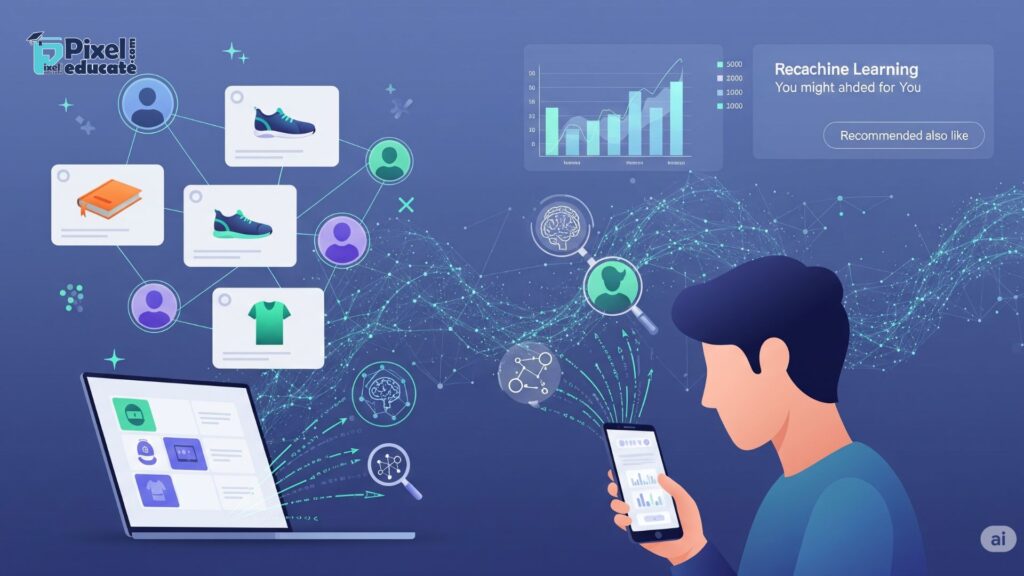
Leveraging AI for personalized product recommendations
Generic “best products” listicles are dying. Your readers want recommendations that feel like they were chosen specifically for them.
AI tools now enable you to create dynamic content that adapts to visitor behavior, delivering personalized recommendations that convert at 2-3x the rate of static content.
Implementation approaches:
- Quiz-based recommenders: Create interactive assessments that guide readers to perfect-fit products
- Behavioral analysis: Use AI to track content consumption patterns and suggest products based on demonstrated interests
- Contextual recommendation blocks: Dynamic content sections that change based on the visitor’s journey through your site
- Personalized email sequences: Tailored follow-ups based on specific products viewed or categories explored
The real magic happens when you combine AI recommendations with your authentic voice and experience. The technology identifies the right products, but your personal insights on why they’re perfect for specific situations creates the trust needed to convert.
Ethical Considerations and Compliance in AI-Assisted Affiliate Marketing
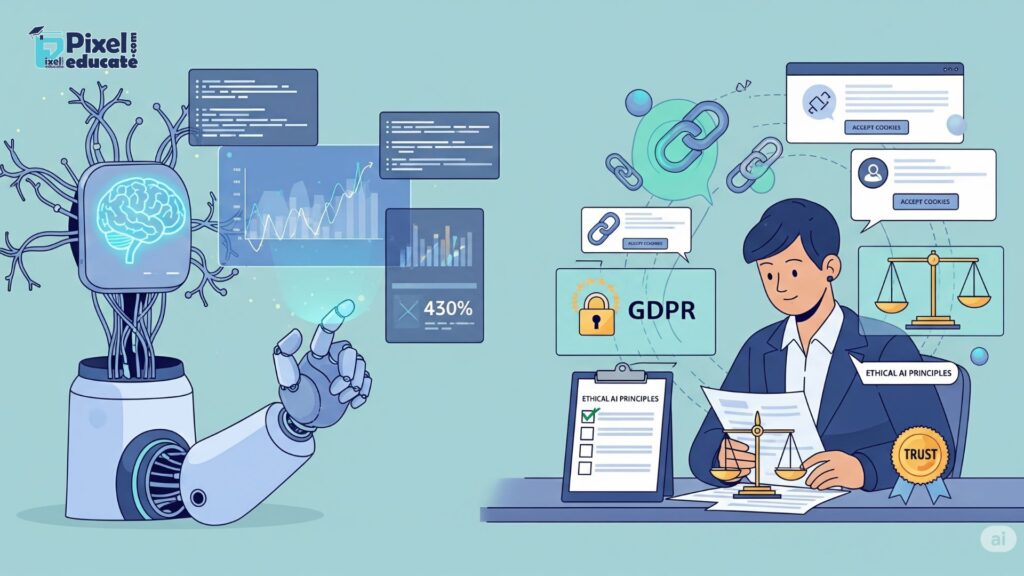
Maintaining transparency with your audience
Trust is your most valuable asset as an affiliate blogger. When using AI to create content, you need to be upfront with your readers. Consider adding a simple disclosure statement somewhere on your site explaining how you use AI tools in your content creation process.
Something like this works well:
“Some content on this site is created with the assistance of AI tools, but all recommendations, reviews, and opinions are based on my personal experience and thorough research.”
Your readers aren’t stupid. They know AI exists and many probably use it themselves. What they don’t want is to be deceived. Being honest about your methods builds credibility and actually sets you apart from competitors who might be hiding their AI usage.
Navigating FTC and international disclosure requirements
The FTC doesn’t play around with affiliate disclosures, and AI usage doesn’t change that one bit. You still need clear affiliate disclosures at the beginning of your content – not buried in your footer or about page.
International regulations vary widely:
| Region | Key Requirements |
|---|---|
| US (FTC) | Clear, conspicuous disclosures before affiliate links |
| EU | GDPR compliance + transparent marketing disclosures |
| UK | ASA guidelines require obvious affiliate relationship disclosure |
| Australia | ACCC requires clear disclosure of commercial relationships |
The safest approach? Make your disclosures obvious regardless of where your readers come from. A simple “This post contains affiliate links. I earn a commission from qualifying purchases at no extra cost to you” does the trick.
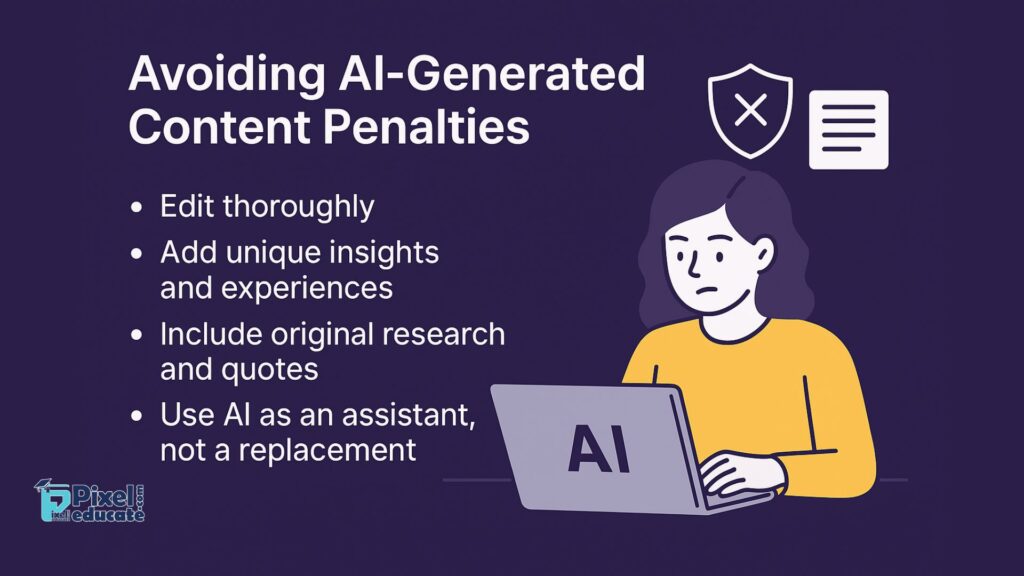
Avoiding AI-generated content penalties
Search engines are getting smarter about detecting low-quality AI content. To stay penalty-free:
- Don’t just generate and publish. Edit thoroughly.
- Add your unique experiences, opinions and insights that AI can’t replicate.
- Include original research, quotes from experts, or proprietary data.
- Use AI as your assistant, not your replacement.
Remember those Google helpful content updates? They specifically target content that seems written primarily for search engines rather than humans. Your AI tools should enhance your expertise, not substitute for it.
Building authentic relationships despite automation
Automation saves time, but relationships build businesses. Balance your AI efficiency with genuine human connection:
- Respond personally to comments (don’t AI-generate these responses)
- Share authentic stories about your product experiences
- Create unscripted video content showing your real personality
- Host live Q&A sessions with your audience
- Admit when you don’t know something (instead of having AI fake expertise)
The most successful affiliate bloggers use AI to handle the repetitive tasks while dedicating their human energy to building connections. Your readers follow you for your unique perspective and personality – something no AI can truly replicate.
Measuring Success and Scaling Your Affiliate Blog
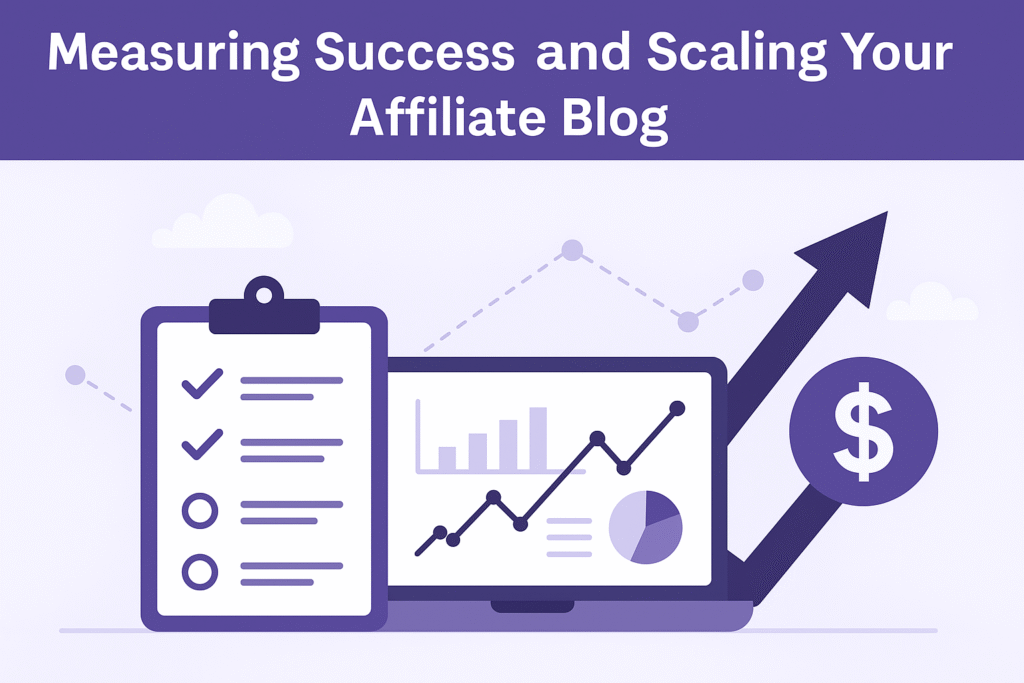
Key performance metrics for affiliate content
Getting serious about your affiliate blog means tracking the right metrics. Don’t just count page views and call it a day. You need deeper insights:
- Conversion rate: The percentage of visitors who click through and purchase. This tells you if your content actually persuades readers.
- EPC (Earnings Per Click): How much you earn on average when someone clicks your affiliate link.
- Revenue per visitor: Total earnings divided by total visitors – a crucial indicator of content effectiveness.
- Content ROI: Time invested in creating content versus revenue generated.
- Keyword rankings: Track position changes for your target terms to gauge SEO performance.
Struggling with poor conversions? Maybe your content isn’t matching search intent or your product recommendations aren’t resonating with readers.
Using AI for data analysis and performance prediction
AI tools have transformed how you can analyze your affiliate blog’s performance. Instead of drowning in spreadsheets, AI can:
- Identify content performance patterns across different topics and products
- Predict which content pieces have the highest revenue potential
- Spot seasonal trends to help you plan content calendars
- Recommend optimization opportunities for underperforming content
- Flag affiliate programs with declining conversion rates
Tools like Google’s Vertex AI and even simpler platforms like Surfer SEO’s Content Planner now incorporate predictive analytics to show which content investments will likely pay off.
The real game-changer? AI can correlate hundreds of variables simultaneously, finding hidden relationships between content factors and revenue that you’d never spot manually.
Automating content updates to maintain relevance
Outdated content kills affiliate revenue. But manually updating every post? That’s a nightmare.
Set up these automated systems instead:
- Price and availability monitoring: Use web scrapers to alert you when product prices change or items go out of stock.
- Automated fact-checking: Tools like ContentBot can flag potentially outdated statistics in your content.
- AI-powered content refreshing: Use AI to rewrite sections that need updating while maintaining your voice.
- Seasonal update reminders: Schedule automatic alerts for time-sensitive content.
Many successful affiliate bloggers use Zapier workflows that trigger content update tasks when certain conditions are met. For example, when Google Search Console shows a post dropping in rankings, or when Amazon API indicates a price change.
Strategies for scaling content production without sacrificing quality
Scaling your affiliate blog doesn’t mean churning out mediocre content. Here’s how to grow while maintaining standards:
- Content templates: Create proven frameworks for different content types (reviews, comparisons, tutorials) that maintain your quality standards.
- AI-assisted research: Use AI to gather product specifications, user sentiment, and competitor angles faster.
- Modular content approach: Build a library of reusable content components for common elements like pros/cons sections or buying guides.
- Editorial oversight system: As you add writers, develop clear quality checkpoints and editorial guidelines.
The smart approach? Use AI for research and first drafts, but keep humans in charge of strategic decisions, tone, and final quality control.
Building systems for passive income growth
Turning your affiliate blog into a truly passive income machine requires systematization:
- Content lifecycle management: Implement a system that tracks each piece from ideation through regular updates and eventual retirement.
- Automated content promotion: Schedule social sharing, email newsletters, and content syndication on autopilot.
- Diversified monetization: Layer multiple income streams (affiliates, display ads, digital products) into each piece of content.
- Team delegation framework: Document processes so team members can execute without your constant input.
The affiliates seeing consistent growth in 2025 aren’t just creating content—they’re building content machines. Each piece you publish should fit into a larger ecosystem designed to generate revenue with minimal ongoing maintenance.
Conclusion
Affiliate blogging has transformed dramatically with AI integration, creating new opportunities for content creators to rank, write, and earn effectively in 2025. By leveraging AI tools for content creation, implementing advanced SEO strategies, and diversifying monetization approaches beyond traditional affiliate links, bloggers can build sustainable income streams while maintaining ethical standards and compliance. The combination of data-driven decision making and AI assistance has democratized affiliate marketing, making it accessible to creators at all experience levels.
As you embark on your AI-powered affiliate blogging journey, remember that technology should enhance—not replace—your unique voice and expertise. Focus on delivering genuine value to your audience while utilizing AI to handle repetitive tasks and provide data-driven insights. Start by implementing one or two AI tools in your workflow, measure their impact, and gradually expand your tech stack as you grow. The affiliate bloggers who thrive in 2025 will be those who strike the perfect balance between technological efficiency and authentic human connection.
❓FAQ: Ethical Considerations and Compliance in AI-Assisted Affiliate Marketing
1. What does ethical AI use mean in affiliate marketing?
Ethical AI use means leveraging AI tools in ways that respect user privacy, avoid manipulation, and ensure transparency. This includes avoiding misleading content, protecting personal data, and using AI responsibly when generating product recommendations.
2. Do I need to disclose AI-generated content?
While not legally required everywhere, it’s considered best practice to be transparent with your audience. Disclosing that AI helped create or optimize your content builds trust and aligns with ethical standards.
3. How can I ensure compliance with privacy regulations like GDPR?
Use affiliate tools that support GDPR compliance, display clear cookie consent banners, and avoid collecting unnecessary personal data. Always provide users with control over how their data is used.
4. Are affiliate tracking links safe and compliant?
Yes, if used responsibly. Ensure your tracking tools are secure, don’t collect sensitive information without consent, and clearly state affiliate relationships in your content.
5. What are the legal risks of using AI in affiliate marketing?
Risks include unintentionally violating copyright laws, spreading false claims, or mishandling personal data. Always verify AI-generated content, use royalty-free images, and stay updated on AI-related advertising policies.
6. How do I maintain transparency with my readers?
Always disclose affiliate links, clearly state sponsored content, and be honest in product reviews. AI should support—not replace—your authentic voice and recommendations.


4 Comments
x0bk8m
x0bk8m
9vttrm
debgh0